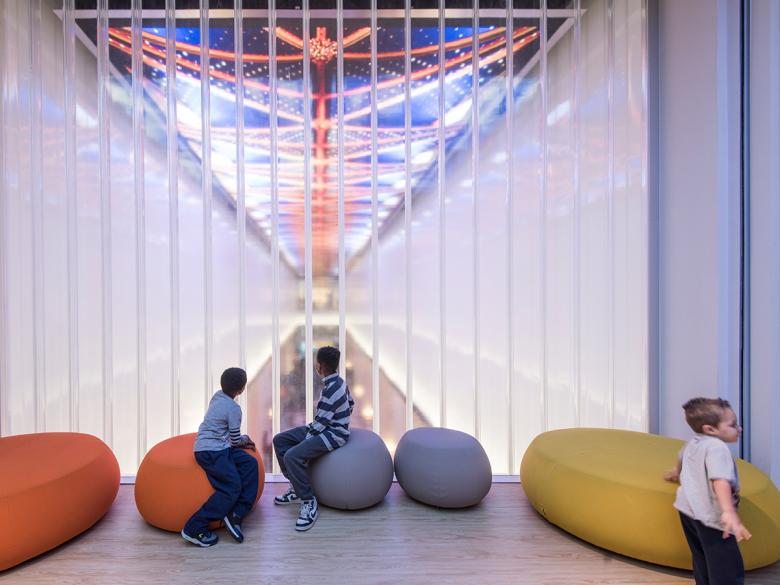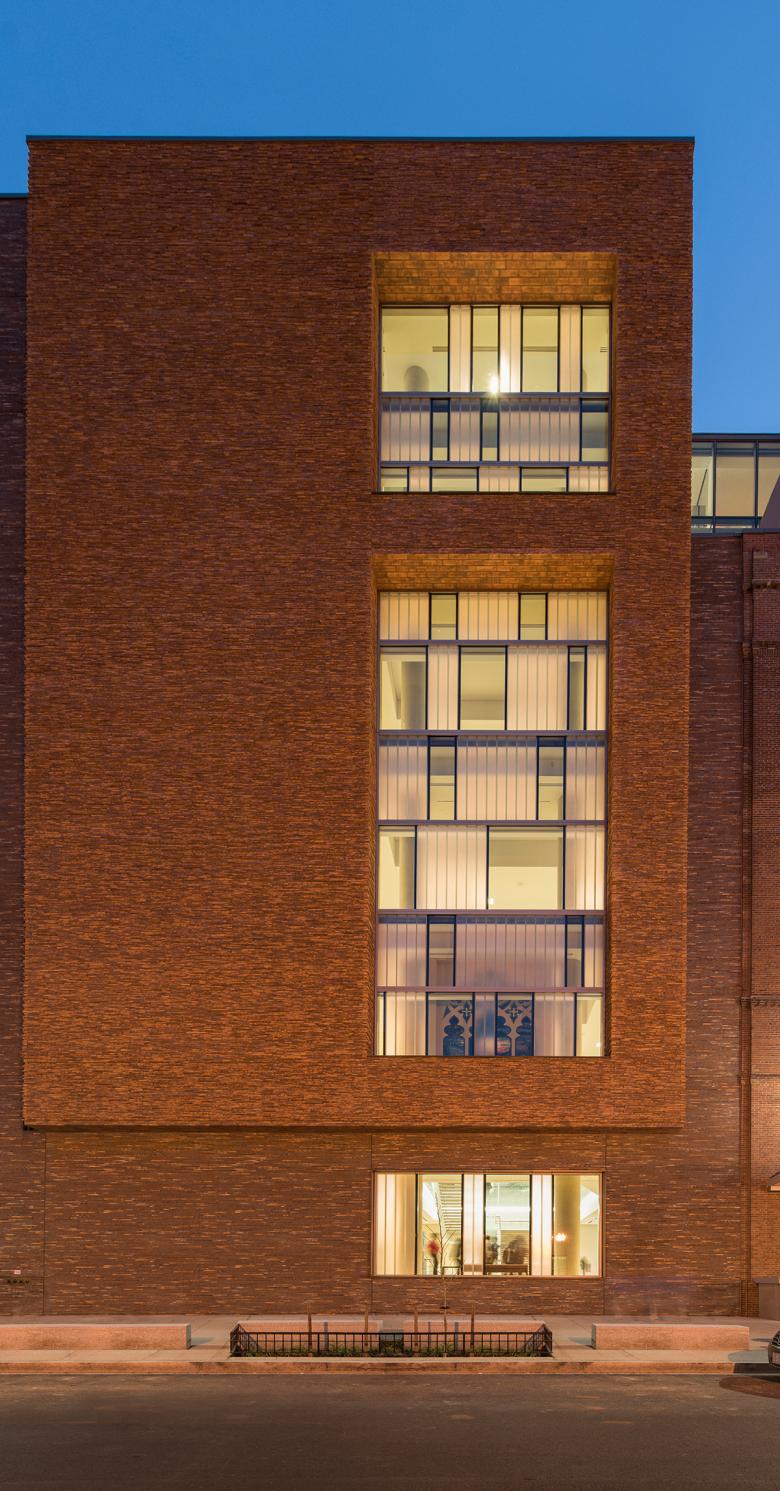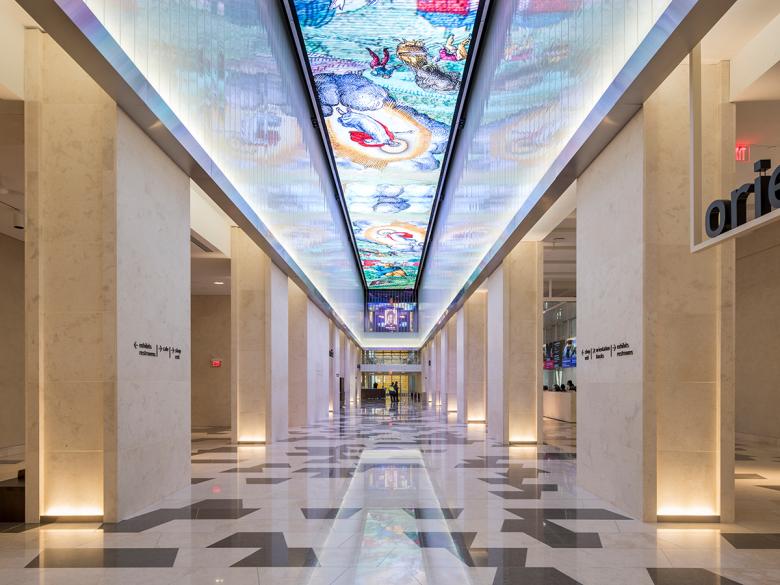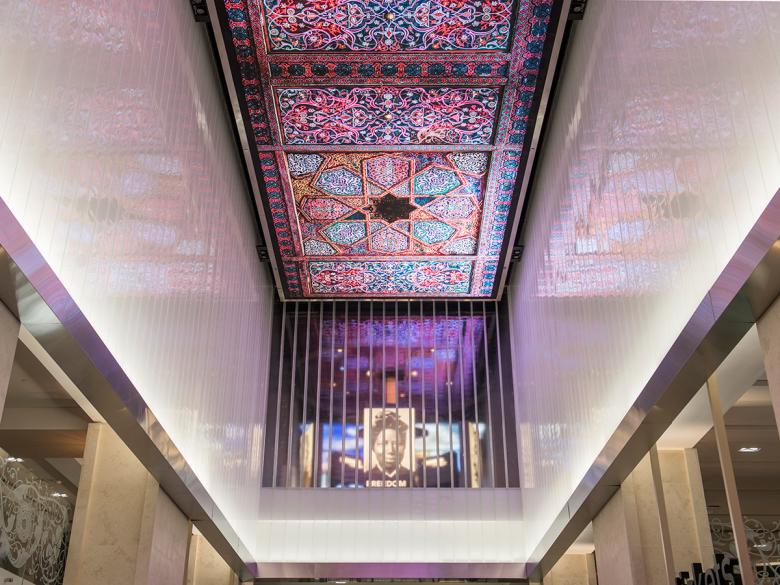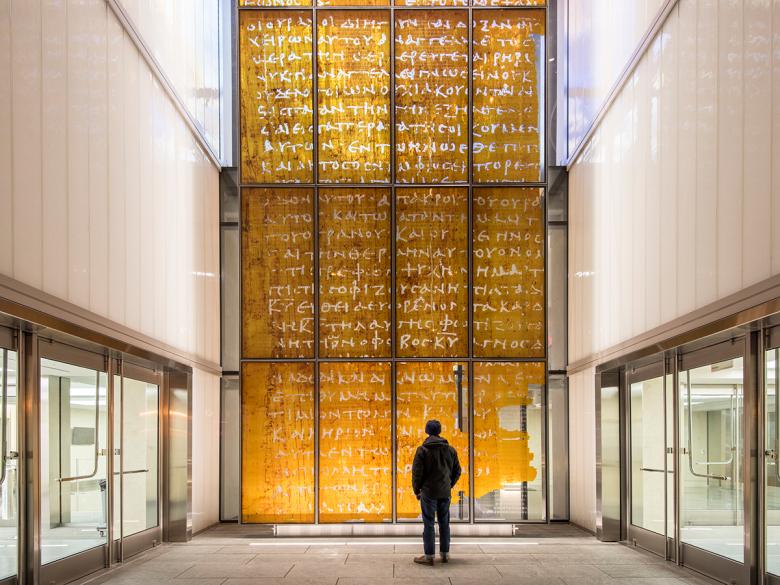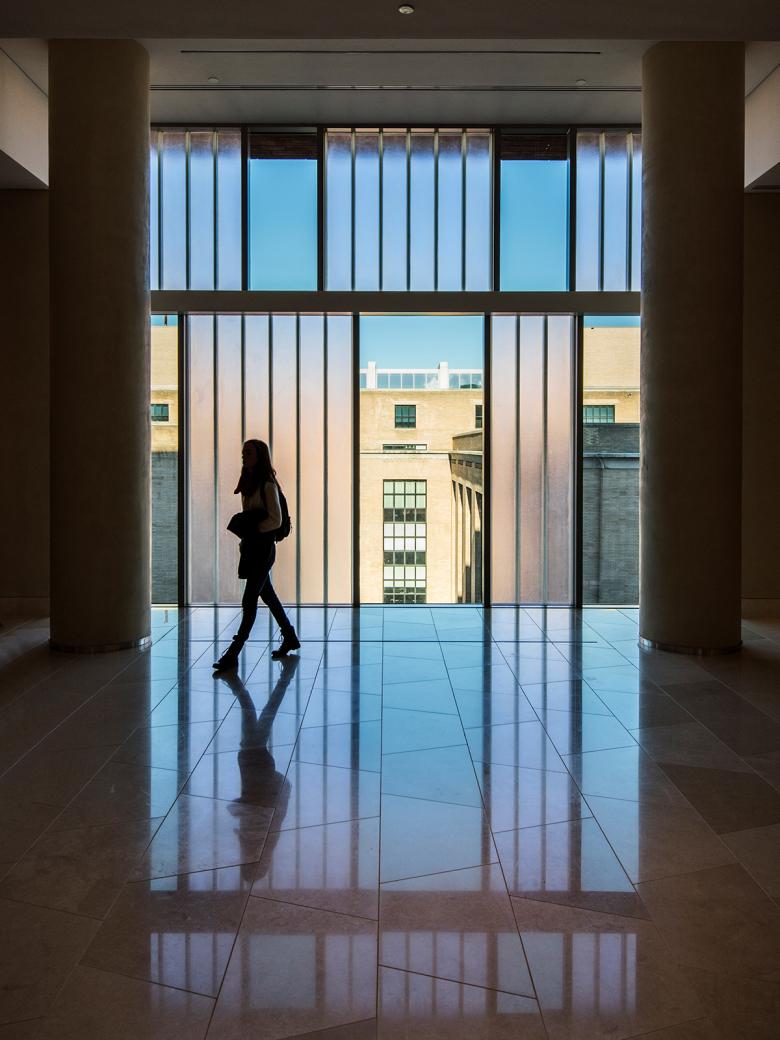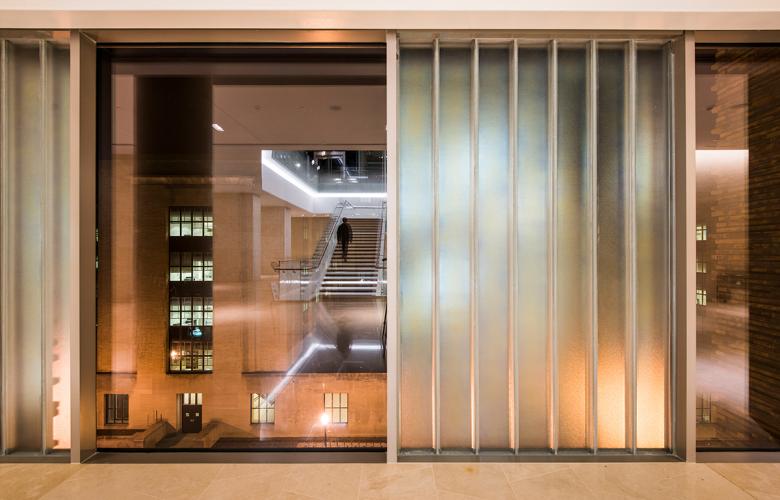The Bible Behind Glass
The new Museum of the Bible in Washington, DC, is located just two blocks from the National Mall, in an old warehouse from 1922. Designed by SmithGroupJJR, the museum features channel-glass walls from Bendheim that illuminate parts of the renovated building.
Project: Museum of the Bible, 2017
Location: Washington, DC
Architect: SmithGroupJJR
Manufacturer: Bendheim
Product: Channel Glass (Clarissimo and 504 Rough Cast textures)
General Contractor: Clark Construction
Installation: Innovo (interiors) and Icon (exteriors)
In November 2017, the controversial Museum of the Bible opened its doors to the public, seven years after the museum was established as a non-profit and after nearly three years of construction. The museum occupies 430,000 square feet in a former refrigeration warehouse from the 1920s. Glass is an integral material in the museum's special spaces, from the entry vestibule and arcade on the ground floor to the vaulted glass roof that caps the brick building.
Of interest here are the applications of Bendheim's familiar channel glass, which can span up to 23 feet with little or no need for intermediate framing. The channel glass that greets visitors to the Museum of the Bible at the entrance and 140-foot-long arcade is just shy of that length, at 22'6". The arcade follows the warehouse's old train portal and therefore draws attention to the building's history. In the words of SmithGroupJJR's David Greenbaum, "it creates a contrast with the brick and refers back to the ice storage function of the refrigerated warehouse." The ceiling of the arcade is a canvas for digital images projected via 555 LED panels; images include stained glass, landscape views, Bible illuminations, scripture and architectural elements.
Many high-profile applications of Bendheim channel glass draw attention to the material's translucent properties, using it to filter natural light during the day and act like a lantern at night. But Bendheim provides channel glass that approaches the transparency of vision glass. Although its 504 Rough Cast channel glass is installed at the exterior wall alongside clear glass to create a pattern of transparent and translucent, the low-iron Clarissimo, used at the entrance and arcade, features a translucent white ceramic frit but also a selective frit to allow views through it. The photo above shows the view through the glass wall at the end of the arcade, while the photo at top reveals the view in the opposite direction: of the arcade from the second-floor gallery.
How the channel glass in varying degrees of transparency relates to the Bible is open to interpretation. For lead designer Greenbaum, "when compared to the clear windows, the channel glass implies the human struggle to find an ethical and moral path in our daily lives."
